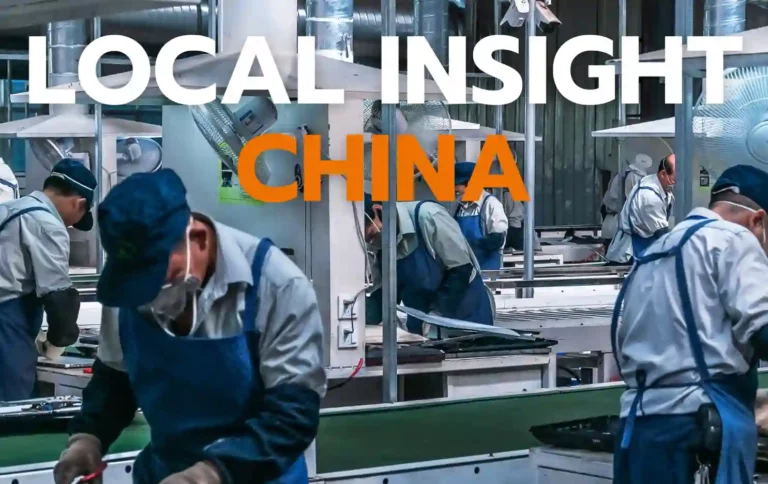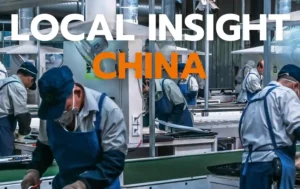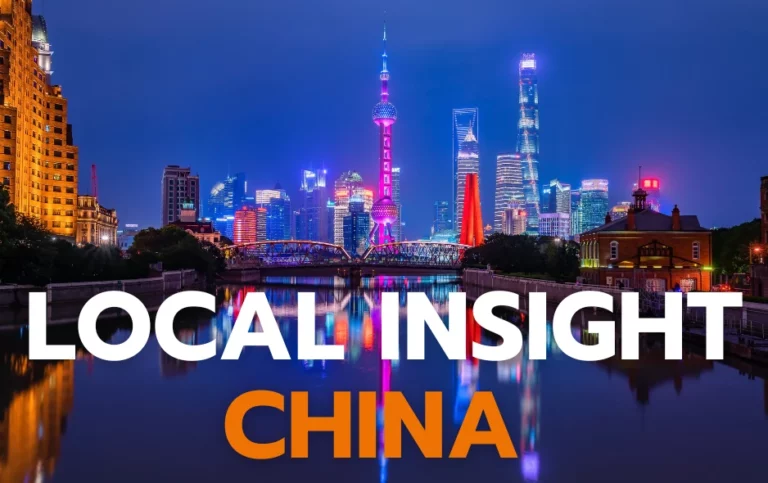China’s Manufacturing Advantage: The Current Landscape
Despite global supply chain diversification, China remains the premier manufacturing destination for forward-thinking SMEs and midmarket companies. The unparalleled combination of scale, infrastructure sophistication, and innovation ecosystem continues to deliver competitive advantages that alternative markets simply cannot match.
Two transformative regulatory developments have reshaped the opportunity landscape:
- Recent Negative List Reforms: Foreign ownership restrictions have been lifted in over 95% of manufacturing sectors, with exceptions for industries involving national security (e.g., rare earth processing, satellite communications), creating unprecedented access across virtually every sector. The latest Foreign Investment Law provides comprehensive guidance on these reforms.
- Company Law Modernization: Recent reforms establish world-class governance standards while streamlining operational requirements. Current legal developments detail these modernization efforts.
Simultaneously, China has launched targeted initiatives to attract specialized SMEs through strategic incentives in free trade zones and next-generation industrial parks. The government’s commitment to zero-carbon industrial parks demonstrates the focus on sustainable manufacturing excellence.
Executive Insight: The most successful market entrants balance speed, control, compliance, and IP protection from day one. Companies that view China as a strategic platform—not merely a production location—consistently outperform competitors. Understanding the broader business opportunities in China is essential for strategic positioning.
The Six Strategic Entry Pathways: Choosing Your Optimal Approach
1. Contract Manufacturing: Rapid Market Access
The contract manufacturing model enables SMEs to leverage established Chinese production capabilities without legal entity formation, delivering the fastest time-to-market with minimal capital requirements.
Strategic Advantages:
Market entry in as little as 30-45 days
- Zero entity formation costs or registered capital requirements
- Complete flexibility to test, pivot, and scale
- Operational simplicity with partner-managed compliance
Strategic Considerations:
- Control limitations over production scheduling and quality protocols
- IP vulnerability without sophisticated protection frameworks
- Business continuity exposure to partner stability and compliance
Key Regulatory Factor: New environmental and product safety regulations have dramatically increased compliance scrutiny. Implement rigorous contractual protections and independent verification systems.
Executive Insight: Your contract manufacturing success depends entirely on partner selection excellence. Prioritize manufacturers with verifiable international client references, transparent ownership structures, and formal compliance certifications.
2. Wholly Foreign-Owned Enterprise (WFOE): Complete Strategic Control
The WFOE structure creates a 100% foreign-owned Chinese legal entity, delivering unmatched operational control and maximum intellectual property protection—the gold standard for foreign companies with proprietary technologies or processes. This approach aligns with China’s Foreign Investment Law framework for international businesses.
Strategic Advantages:
- Absolute operational control over every business aspect
- Maximum intellectual property protection within your corporate structure
- Direct employment, contracting, and financial authority
- Unrestricted domestic market access and customer relationships
Strategic Considerations:
- The actual cost depends on industry access permits, environmental impact assessment requirements, and local policies. While minimum registered capital requirements have been eliminated, actual costs vary significantly due to industry and regional differences
- Shanghai Free Trade Zone Technology-based WFOE: Registration costs typically range from $15,000-$200,000*
- WFOE requiring chemical production license: Initial compliance investment may exceed $200,000*
- Complex compliance requirements across multiple regulatory domains
- Direct exposure to market and regulatory risks
*Figures are approximate and subject to change based on current regulations and regional policies.
Key Regulatory Factor: Recent Company Law reforms require all WFOEs to update Articles of Association with enhanced governance provisions and transparent capital contribution schedules.
Executive Insight: The WFOE represents a strategic commitment requiring professional guidance. For comprehensive guidance on setting up a subsidiary company in China, specialized expertise is essential. Invest in top-tier legal and tax support from inception—the quality of your implementation team directly impacts your speed-to-market and compliance positioning.
3. Joint Venture (JV): Strategic Leverage Through Partnership
While no longer a regulatory requirement, strategic joint ventures deliver unique advantages when local networks, existing assets, or market access considerations are critical success factors.
Strategic Advantages:
- Access to established customer relationships and supplier networks
- Ability to leverage partner’s existing licenses and permits
- Accelerated market penetration through shared resources
- Political risk mitigation in sensitive sectors
Strategic Considerations:
- Decision-making complexity with shared governance
- Technology transfer risks without robust protection mechanisms
- Partnership evolution challenges as objectives shift
- Potentially complex exit processes requiring advanced planning
Key Regulatory Factor: Recent Company Law reforms have enhanced minority shareholder protections and governance transparency requirements, creating more balanced JV frameworks.
Executive Insight: Joint venture success depends on alignment of strategic objectives and operational expectations. Document explicit technology protection protocols and clear exit mechanisms before signing any partnership agreement.
4. Industrial Parks and Specialized Zones: Accelerated Deployment
China’s advanced industrial parks offer turnkey solutions with pre-developed infrastructure, streamlined regulatory pathways, and targeted incentives for qualified companies.
Strategic Advantages:
- Operational capability in as little as 60-90 days
- Infrastructure readiness without capital-intensive construction
- Access to specialized support services and potential subsidies
- Industry clustering benefits and potential partnership opportunities
Strategic Considerations:
- Standardized facilities with potential customization limitations
- Shared infrastructure factors affecting quality and security
- Ongoing fee structures requiring careful long-term analysis
Key Development: New specialized SME-focused parks offer unprecedented “single window” processing—reducing administrative requirements by up to 65% compared to standard locations.
Executive Insight: Industrial parks represent an ideal platform for testing and scaling Chinese operations with minimized upfront investment. Leading examples include the Suzhou Industrial Park and Wuhan Economic & Technological Development Zone. Evaluate parks based on tenant quality, infrastructure reliability, and support service effectiveness rather than focusing exclusively on incentive packages.
5. Strategic Acquisition: Immediate Operational Scale
Acquiring an existing China factory delivers immediate production capabilities and market positioning, bypassing the extended timeline for new facility development while providing established operational infrastructure.
Strategic Advantages:
- Immediate operational capability with existing assets and workforce
- Established supplier relationships and potential customer base
- Dramatic time advantage versus new development (12-18 months)
- Operational performance history providing predictability
Strategic Considerations:
- Potential undisclosed liabilities or compliance deficiencies
- Cultural integration challenges requiring focused management
- Regulatory review processes in certain sectors
Key Development: Recent M&A framework revisions emphasize transaction transparency and competitive impact assessment, while several provinces now publish official “preferred acquisition target” lists.
Executive Insight: Acquisition success depends entirely on comprehensive due diligence excellence. Engage specialized advisors with specific China transaction experience to assess legal, financial, operational, and environmental factors before commitment.
6. Representative Office + Outsourced Production: Strategic Positioning
The Representative Office (RO) structure establishes legitimate physical presence for relationship development and production oversight without direct commercial operations—an ideal approach for market testing with minimal risk.
Strategic Advantages:
- Streamlined establishment (typically 4-6 weeks)
- Minimal operational costs and administrative requirements
- Market intelligence development without major commitment
- Reduced risk profile during initial market evaluation
Strategic Considerations:
- Strict prohibition against direct revenue generation
- Future conversion requirement for commercial expansion
- Potential banking and financial transfer limitations
Key Development: Regulatory authorities have intensified RO compliance monitoring while simultaneously streamlining legitimate operational pathways.
Executive Insight: The RO structure works best as a transitional platform focused on relationship development, supplier oversight, or market research, not as a long-term operational solution. Budget for 12-24 months of operations before evaluating conversion to a more permanent structure.
Five Critical Success Factors for Manufacturing Excellence
1. Strategic Location Selection: The Foundation of Operational Success
Your manufacturing location directly determines operational economics, supply chain efficiency, and market responsiveness:
- Yangtze River Delta (Shanghai, Jiangsu, Zhejiang): Precision manufacturing with sophisticated supplier ecosystems but premium cost structures
- Greater Bay Area (Guangdong, Shenzhen): Unmatched electronics and consumer goods expertise with exceptional logistics capabilities
- Beijing-Tianjin Corridor: Optimal for sectors requiring strong government relationships or research collaboration
- Central/Western Regions (Sichuan, Chongqing, Anhui): Emerging manufacturing powerhouses with compelling cost advantages
- Specialized Free Trade Zones: Targeted advantages in customs processing, financial flexibility, and regulatory streamlining
Executive Insight: The ideal location balances your specific industry requirements, cost sensitivities, and strategic positioning objectives. The lowest-cost location rarely delivers the best total value proposition.
2. Labor Strategy: Navigating China’s Evolving Workforce Dynamics
Labor markets continue evolving with significant regional variations that directly impact operational economics:
- Tier-1 Cities: Approximately ¥8,000–¥10,000 monthly for skilled manufacturing talent*
- Tier-2 Cities: Approximately ¥6,000–¥8,000 monthly with growing technical capabilities*
- Emerging Locations: Approximately ¥4,000–¥6,000 monthly with developing skill bases*
- Plus 25-30% for mandatory social insurance and housing funds
*Wage figures are approximate and subject to regional variations and market conditions. Consult current local sources for precise rates.
Executive Insight: Develop a comprehensive workforce strategy addressing recruitment, retention, and productivity enhancement, not merely wage considerations. The quality and stability of your labor force directly determine operational success.
3. Intellectual Property Protection: Securing Your Competitive Advantage
Despite significant legal framework improvements, intellectual property protection demands a proactive, multi-layered strategy:
- Secure China-specific registrations before any operational engagement
- Implement comprehensive contractual protections with all partners
- Consider strategic process segmentation for sensitive technologies
- Develop relationships with specialized enforcement resources
Executive Insight: The most successful companies treat IP protection as a core strategic function, not merely a legal consideration. Implement protection protocols from the earliest planning stages, with regular assessments and enhancements.
4. Compliance Excellence: The Foundation of Sustainable Operations
China’s sophisticated regulatory environment demands specialized expertise and systematic approaches:
- Engage corporate counsel with specific Foreign Investment Law expertise, referencing the latest regulatory framework
- Secure tax advisory support for VAT, customs, and transfer pricing
- Implement HR systems designed for China’s unique labor requirements
- Develop compliance monitoring systems with regular independent review
Executive Insight: Compliance excellence represents a competitive advantage, not merely a cost center. Foreign companies that invest in robust compliance frameworks consistently outperform reactive competitors through reduced disruption and enhanced operational predictability.
5. Incentive Optimization: Strategic Advantage Through Government Programs
China offers substantial incentives for targeted industries and investment profiles:
- Land and facility subsidies reducing capital requirements
- Tax incentives including reduced rates and holiday periods
- Direct financial support for innovation and sustainability initiatives
- Workforce development programs and talent acquisition assistance
Executive Insight: Evaluate incentive packages against realistic performance capabilities. Negotiate achievable requirements that align with your actual business plan, rather than accepting standardized targets that may create future liabilities.
The Executive Roadmap: Your Strategic Implementation Path
Phase 1: Strategic Foundation (Weeks 1-4)
- Define clear manufacturing objectives and performance criteria
- Evaluate entry pathways against strategic requirements
- Conduct preliminary location assessment
- Initiate intellectual property protection process
Phase 2: Structural Framework (Weeks 5-12)
- Select optimal entry structure and location
- Engage specialized legal and tax advisors
- Develop comprehensive implementation budget
- Create detailed operational and compliance roadmap
Phase 3: Implementation Excellence (Weeks 13-26)
- Execute entity formation or partnership agreements
- Implement comprehensive compliance systems
- Establish manufacturing infrastructure and supply chain
- Develop talent acquisition and management systems
Phase 4: Operational Optimization (Months 7-12)
- Implement systematic quality and efficiency protocols
- Develop strategic supplier relationships
- Optimize logistics and distribution networks
- Create continuous improvement methodologies.
Conclusion: Your China Manufacturing Advantage
China’s manufacturing ecosystem offers unprecedented strategic advantages for SMEs that implement thoughtful, comprehensive market entry strategies. Foreign companies that align governance, operational excellence, and compliance from inception position themselves not merely for production capabilities, but for sustainable competitive advantage in global markets.
The most successful market entrants recognize that manufacturing in China represents more than cost efficiency—it provides access to the world’s most sophisticated production ecosystem, innovation capabilities, and growth potential for forward-thinking companies. Understanding the comprehensive landscape of doing business in China is crucial for sustainable success.
By selecting the optimal entry pathway, implementing robust operational frameworks, and leveraging China’s unique advantages, your company can achieve manufacturing excellence that delivers lasting strategic value.









